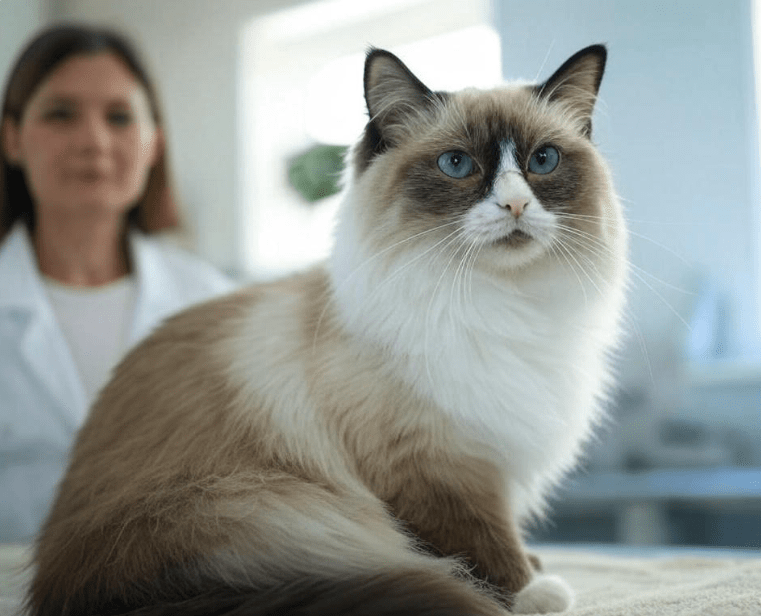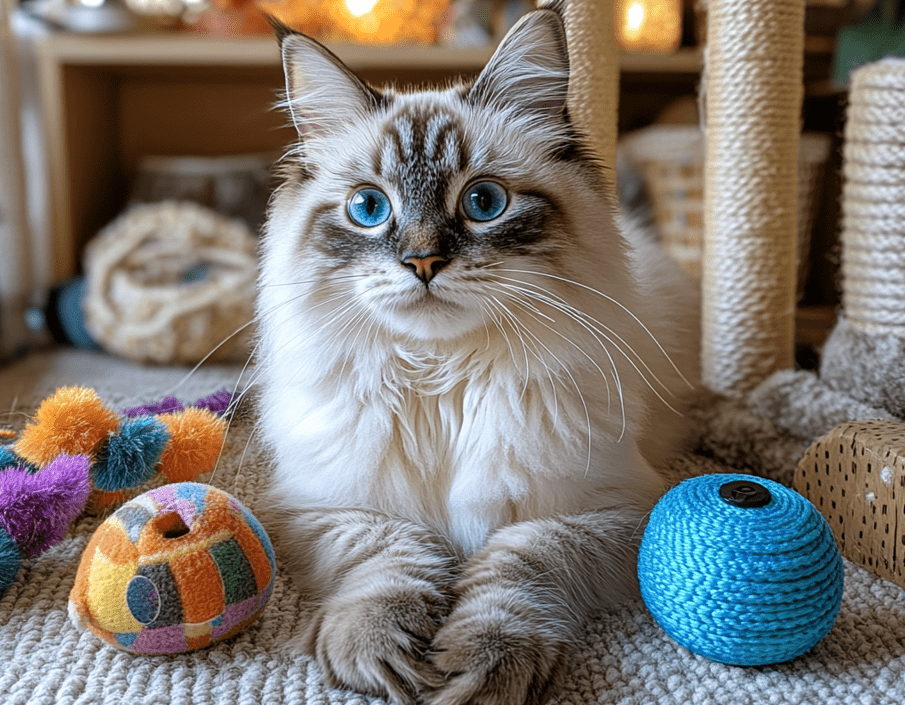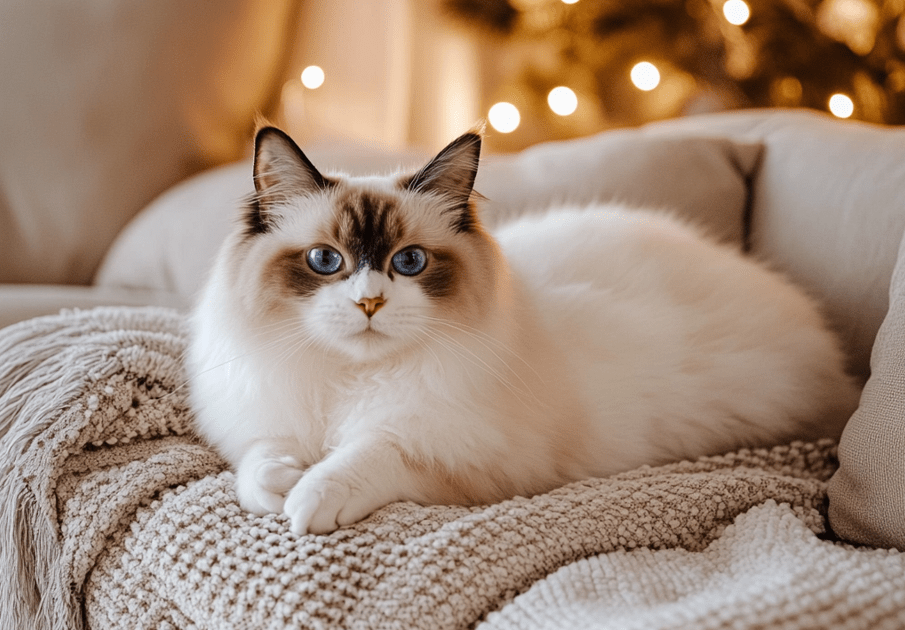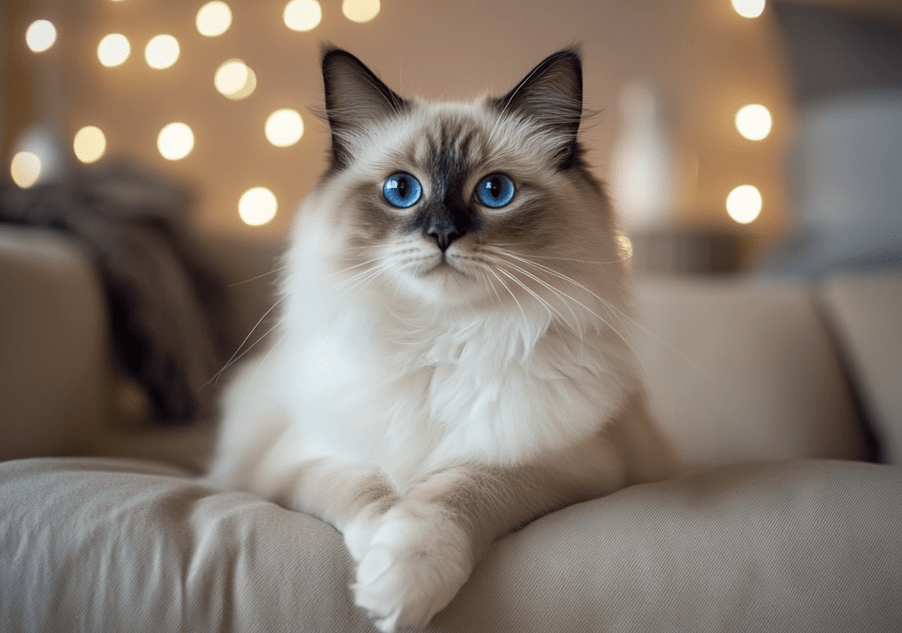
Ragdoll cats are beloved for their affectionate nature, striking blue eyes, and silky fur, but ensuring they get enough Ragdoll cat playtime is essential for their health and happiness. These gentle giants thrive on interaction and stimulation, and insufficient play can lead to behavioral and physical issues. If you’re wondering whether your Ragdoll needs more playtime, this article explores five telltale signs, offers practical solutions, and provides expert insights to keep your feline friend thriving. Let’s dive into how you can enhance your Ragdoll’s well-being through engaging play.
Why Playtime Matters for Ragdoll Cats
Ragdolls are a unique breed, known for their docile temperament and tendency to go limp when held, earning them the “Ragdoll” name. Despite their laid-back demeanor, these cats have a playful side that requires regular stimulation. Playtime isn’t just about fun—it’s critical for their physical health, mental sharpness, and emotional balance. Without adequate Ragdoll cat playtime, your pet may exhibit signs of boredom, stress, or even health problems.
Playtime supports:
Physical fitness: Ragdolls are prone to weight gain, and play helps maintain a healthy weight.
Mental stimulation: Interactive activities keep their curious minds engaged.
Bonding: Play strengthens the bond between you and your cat.
Stress relief: Active play reduces anxiety and promotes relaxation.
Understanding the importance of playtime sets the stage for recognizing when your Ragdoll needs more of it. Below, we’ll explore the five key signs that indicate your cat is craving additional engagement.
Sign 1: Increased Destructive Behavior
One of the most noticeable signs that your Ragdoll needs more playtime is an uptick in destructive behavior. If your cat is scratching furniture, knocking over items, or chewing on inappropriate objects, it could be a cry for attention and stimulation.
Why It Happens
Ragdolls are intelligent and curious, and without enough mental and physical activity, they may channel their energy into destructive habits. Boredom often leads to scratching or chewing as a way to release pent-up energy or explore their environment.
How to Address It
Introduce interactive toys: Feather wands, laser pointers, or puzzle toys can engage your Ragdoll’s hunting instincts.
Create a scratching post haven: Ensure they have multiple scratching posts or pads to redirect their energy.
Schedule daily play sessions: Aim for at least 15–20 minutes of focused play twice a day to tire them out.
By increasing Ragdoll cat playtime, you can curb destructive tendencies and provide a healthy outlet for their energy.
Sign 2: Excessive Vocalization
Is your Ragdoll meowing more than usual, especially at odd hours? Excessive vocalization is another sign they may need more playtime. While Ragdolls are generally quiet, they may become more vocal when bored or seeking attention.
Why It Happens
Ragdolls are social cats that thrive on interaction with their owners. If they feel neglected or understimulated, they may meow persistently to express their needs. This behavior is particularly common in the evenings when cats are naturally more active.
How to Address It
Engage in active play before bedtime: A vigorous play session can help burn off energy and reduce nighttime vocalization.
Use sound-based toys: Toys that squeak or rattle can capture their attention and satisfy their curiosity.
Offer companionship: Spend quality time with your Ragdoll through petting or grooming alongside play to meet their social needs.
Incorporating more Ragdoll cat playtime into their routine can quiet excessive meowing and keep them content.
Sign 3: Weight Gain or Lethargy
Ragdolls are prone to obesity, especially if they lead a sedentary lifestyle. If your cat is gaining weight or seems unusually lethargic, it’s a strong indicator they need more physical activity through play.

Why It Happens
A lack of exercise can lead to weight gain, which increases the risk of health issues like diabetes or joint problems. Lethargy may also stem from boredom, as unstimulated Ragdolls may sleep excessively to pass the time.
How to Address It
Incorporate chasing games: Use toys like feather teasers or balls to encourage running and jumping.
Rotate toys regularly: Keep playtime exciting by introducing new toys or rotating existing ones to maintain interest.
Monitor diet alongside play: Pair increased playtime with a balanced diet to support weight management.
Boosting Ragdoll cat playtime not only helps with weight control but also restores their natural energy and enthusiasm.
Sign 4: Attention-Seeking Behavior
Does your Ragdoll follow you around, nudge you, or demand constant attention? While their affectionate nature makes them prone to seeking closeness, excessive clinginess may signal a need for more playtime.
Why It Happens
Ragdolls crave interaction, and without enough play, they may resort to attention-seeking behaviors like pawing at you, jumping on counters, or interrupting your work. These actions often indicate they’re bored and looking for stimulation.
How to Address It
Set up a play routine: Consistent play sessions at the same time each day help your Ragdoll anticipate and enjoy their activity.
Use puzzle feeders: These engage their mind and provide a rewarding challenge during play.
Create a stimulating environment: Add cat trees, tunnels, or window perches to encourage exploration between play sessions.
By prioritizing Ragdoll cat playtime, you can satisfy their need for interaction and reduce overly clingy behavior.
Sign 5: Aggression or Irritability
If your normally gentle Ragdoll becomes aggressive—swatting, hissing, or biting—it could be a sign of frustration from insufficient playtime. This behavior is rare for the breed but can emerge when their needs aren’t met.
Why It Happens
Pent-up energy or boredom can make Ragdolls irritable, leading to aggressive outbursts. This is especially true if they’re not getting enough opportunities to “hunt” or engage their natural instincts.
How to Address It
Mimic hunting with toys: Toys that resemble prey, like stuffed mice or feather wands, allow your Ragdoll to express their hunting instincts safely.
Avoid overstimulation: Pay attention to your cat’s cues during play to prevent frustration, such as taking breaks if they seem overwhelmed.
Consult a vet: If aggression persists, rule out underlying health issues that may contribute to irritability.
Increasing Ragdoll cat playtime can channel their energy positively and restore their calm, loving demeanor.
How to Create an Effective Playtime Routine for Your Ragdoll

Now that you’ve identified the signs, it’s time to build a playtime routine that keeps your Ragdoll happy and healthy. Here’s a step-by-step guide to creating a stimulating and enjoyable play schedule:
Step 1: Understand Your Ragdoll’s Preferences
Every Ragdoll is unique. Some love chasing laser pointers, while others prefer batting at balls or pouncing on feather toys. Observe what excites your cat and tailor playtime to their interests.
Step 2: Schedule Consistent Play Sessions
Aim for two to three play sessions daily, each lasting 15–20 minutes. Morning and evening sessions work well, as Ragdolls are often most active during these times.
Step 3: Mix Up Activities
Variety prevents boredom. Rotate between:
Interactive play: Use wands, lasers, or strings to engage their hunting instincts.
Solo play: Provide toys like balls or automated toys for when you’re not home.
Mental stimulation: Puzzle feeders or treat-dispensing toys challenge their minds.
Step 4: Create a Cat-Friendly Environment
Enhance playtime by setting up a stimulating environment with cat trees, tunnels, and window perches. These encourage exploration and activity even outside of play sessions.
Step 5: Monitor and Adjust
Pay attention to your Ragdoll’s behavior and energy levels. If signs of boredom or restlessness persist, increase the duration or frequency of playtime.
Best Toys for Ragdoll Cat Playtime
Choosing the right toys can make Ragdoll cat playtime more engaging. Here are some top recommendations:
Feather wands: Mimic prey movement to trigger hunting instincts.
Laser pointers: Encourage chasing and pouncing (always follow with a physical toy to avoid frustration).
Puzzle feeders: Stimulate their mind while rewarding them with treats.
Cat tunnels: Provide a fun space for exploration and hiding.
Automated toys: Battery-powered toys like moving mice keep them entertained when you’re busy.
Pro Tip: Rotate toys every few days to maintain novelty and prevent boredom.
Common Mistakes to Avoid During Ragdoll Cat Playtime
To maximize the benefits of playtime, steer clear of these pitfalls:
Inconsistent routines: Sporadic play can leave your Ragdoll bored or frustrated.
Overstimulation: Too much intense play without breaks can overwhelm your cat.
Ignoring their cues: If your Ragdoll walks away or seems disinterested, switch toys or take a break.
Using hands as toys: This can encourage biting or scratching, so always use toys for play.
The Role of Playtime in Ragdoll Health and Longevity
Beyond addressing behavioral issues, regular Ragdoll cat playtime contributes to long-term health. Active cats are less likely to develop obesity-related conditions like diabetes or heart disease. Play also supports joint health, which is crucial for larger breeds like Ragdolls, who may be prone to arthritis as they age.
Mentally, playtime keeps your Ragdoll sharp and engaged, reducing the risk of anxiety or depression. A happy, stimulated cat is more likely to live a longer, healthier life, making playtime an investment in their future.
Conclusion

Ensuring your Ragdoll gets enough playtime is key to their physical health, mental well-being, and happiness. By recognizing the five signs—destructive behavior, excessive vocalization, weight gain, attention-seeking, and aggression—you can take proactive steps to enrich their life. A consistent play routine, engaging toys, and a stimulating environment will keep your Ragdoll thriving.
Make Ragdoll cat playtime a priority, and you’ll not only prevent behavioral issues but also deepen your bond with your furry friend. Start today by scheduling a play session and watching your Ragdoll’s joy come to life!




